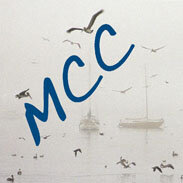Surfers' Beach
Surfers’ Beach Adaptation Concepts Plan (Caltrans, Nov 2025)
Surfers' Beach & Miramar Shoreline Erosion & Armoring (slide presentation Feb 2021)
Surfers' Beach Sea Level Rise Asset Vulnerability Profile 2018
Surfers' Beach Pilot Restoration Project (Harbor District)
Surfers’ Beach July 2016
In 2015 the Harbor District initiated a Pilot Surfers’ Beach Sand Replenishment Project as a reduced scale of the Army Corps preferred alternative, and began seeking grant funding and stakeholder partners. The pilot project involves a one-time placement of up to 100,000 cubic yards of east basin dredge material onto Surfers’ Beach between the jetty and Coronado St, using a suction dredge and pumping system to transport a sand slurry via pipeline.
Construction is anticipated in spring/summer 2025, beginning with an eelgrass mitigation project in the west basin required by permitting agencies. If the follow-up 2-year monitoring program finds that the project is effective and does not cause unacceptable environmental impacts, then a larger beach nourishment project would be pursued in the future.
Sept 2024 CA Ocean Protection Council awards $2.9M for project construction
June 2024 project permitting process overview
Sept 2023 Coastal Development Permit: CCC staff report - exhibits
April 2023 update staff report
July 2022 update staff report - slides
Earlier updates: Oct 2020, Aug 2020, Apr 2019, May 2018, Feb 2017, Mar 2016
Oct 2015 consultant Scope of Services
May 2015 Beach Replenishment Committee minutes
Highway & Coastal Trail Armoring (Caltrans)
Jan 2016 Surfers’ Beach, Caltrans project
UPDATE Sept 2024: Caltrans obtained emergency CDP to repair storm-damaged sections of Coastal Trail and revetment along Surfers’ Beach, and upgrade the beach access stairs to concrete.
San Mateo County, Caltrans, and Half Moon Bay collaborated on a project constructed in 2016 to protect the highway from erosion at Surfers’ Beach, connect a 400-foot section of the Coastal Trail, and add a stairway down to the beach over the newly installed 175-foot section of rock slope protection. The Coastal Development Permit for the coastal armoring is temporary, for a 10-year period, to allow time for Caltrans to implement a long-term solution to protect the highway from erosion (such as moving this section of highway).
Sep 2016 ribbon cutting ceremony - flyer
Nov 2015 Caltrans construction begins - press release
Jun 2015 Coastal Commission permit - staff report
Feb 2015 Community meeting- presentation - video
Oct 2014 County presentation to MCC
Jul 2014 BoS approve funding for planning/permitting
Sep 2013 Supervisor Horsley to Caltrans - reply
Harbor Breakwater (US Army Corps of Engineers)
Construction of the Pillar Point Harbor breakwater by the Army Corps 1959-61 dramatically increased the rate of erosion south of the jetty to Medio Creek. Since 2009 the Harbor District has sought mitigation by the Army Corps. The 2009-2016 feasibility study (see below) analyzed various mitigation design measures but did not recommend federal funding for a project.
2024 new Feasibility study authorized by Congress
North Half Moon Bay Coastal Erosion and Sea Level Rise Project (Pillar Point to south of Miramar):
In 2024, SMC Harbor District worked with Congresswoman Anna Eshoo to include a new feasibility study in the federal Water Resources Development Act of 2024 (WRDA 2024). The project goal is to mitigate and prevent further damage caused by the breakwater. The feasibility study will involve multiple agencies (federal, state, and local), and the public will also be involved through public meetings and workshops. It is important to note that WRDA-2024 only provides authorization to the Army Corps to conduct the study. The study and resulting work still need funding.
2009-2016 Army Corps Feasibility Study
In 2009 the Army Corps, with the Harbor District as local 50% sponsor, initiated the Northern Half Moon Bay Shoreline Improvement Project to determine the feasibility of an Army Corps project to mitigate greatly increased down-coast erosion and harbor sediment buildup. Seven plus years and over $1 million later, the final report was released in Feb 2017. This table summarizes the design measures analyzed and conclusions. The preferred alternative, estimated to cost $5 million, was to move 150,000 cubic yards of harbor dredged material to Surfers' Beach and southward to the Miramar revetment (figure); however, no Army Corps project was recommended for federal funding due to inadequate cost/benefit ratio.
2016 May Coastside Sea Rise & Erosion Forum: Agenda, Video, presentations: Dan Hoover, USGS - James Zoulas, USACE - Bob Battalio, ESA
2016 Apr Army Corps final report — Coastal Engineering Appendix — Economic Analysis.
2015 Mar news report: >$1 million spent so far on analysis.
2012 May Army Corps Feasibility Cost Share Table/Work Plan
2009 Oct Bob Battalio presentation on surf & sand dynamics



